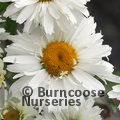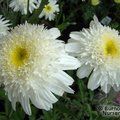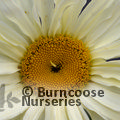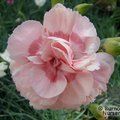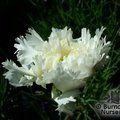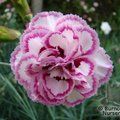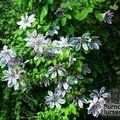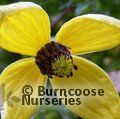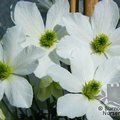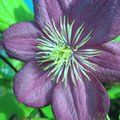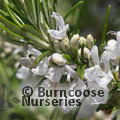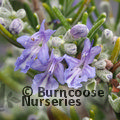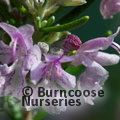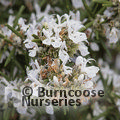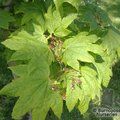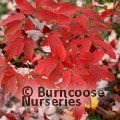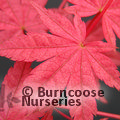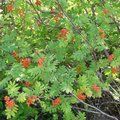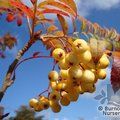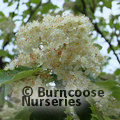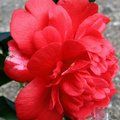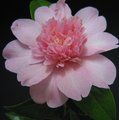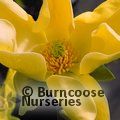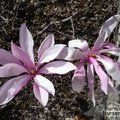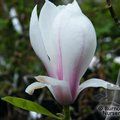- Shop Now
- Burncoose Specialities
- This Month
- Offers & Promotions
- RHS Chelsea Flower Show 2024
- 40 years at Burncoose
- Engage With Us
- Information, Help & Advice
- About Us & Our Services
- Terms & Conditions
- Log In / Register
Chapters
Planting to avoid allergic reactions and asthma
Allergic reactions and pollen
One of our senior nursery staff recently travelled to Australia for a family holiday get together. We were all keen to encourage her to bring back photographs of the native southern hemisphere shrubs and trees which we offer here from the nursery. This trip proved to be something of a disaster with major allergic skin and breathing reactions to wild growing leptospermum, juniper and eucalyptus the like of which she had never experienced before.
My wife, other staff members, as well as customers at the Chelsea Flower Show in late May have often referred to inflammation of their eyes and bouts of sneezing from the flowering of London plane trees around the Royal Hospital grounds at that time of the year.
Those of us who are lucky enough not to suffer from asthma or serious pollen allergies tend to think of ‘hay fever’ as something which comes from the pollen of flowering grasses in the summer. We see this daily in the ‘pollen count’ figures in the weather forecasts. The reality is very different for many people who develop allergies from the pollen of flowering plants in their own gardens in late spring or early summer often without realising exactly who the main plant culprits may actually be.
There are a few general principles which can be adopted in considering which plants to remove from your garden if they may be causing you or your family to have allergies or asthma attacks. These are guiding principles only and are not intended as a definitive list. Individual sufferers will, of course, react differently to individual species when in flower.
1. Some trees and a few shrubs are dioecious in that separate plants are male while others are female. For obvious reasons male trees or shrubs make great efforts to spread their pollen on the wind to find their female equivalents nearby or far away. They therefore produce far more copious quantities of pollen when in flower than their female equivalents. Female forms of a particular plant are therefore very likely to be more desirable in busy streets or near the entrance to your house.
2. Most trees, shrubs and the vast majority of herbaceous plants are self-pollinating and have male as well as female flowering parts on the same plant. In other words they are bisexual or hermaphrodite. The general approach should therefore be:-
i) Herbaceous plants with tubular or bell shaped flowers (eg foxgloves) which hang down are unlikely to distribute their pollen very widely.
ii) Plants which have strong scents to their flowers rely on insects to achieve pollination. They rely less on the wind to do this and therefore often produce less pollen.
iii) Plants with very bright coloured or gaudy flowers are again designed to attract insects to ensure pollination rather than relying on the wind.
iv) Plants with lots of very tiny and often unobtrusive flowers can produce masses of pollen and, when in full flower, can create huge pollen clouds in the wind. These sorts of plants are likely to do the most damage to allergy sufferers. Many conifers and some hedging plants which are very widely grown in UK gardens definitely come into this category.
These broad generalisations all provide clear clues as to which plants may or may not be causing the problem for you when they are in full flower. Some sufferers may have allergies just to the pollen of one specific plant while others may well be affected by a range of broadly similar or different plants.
Plants which produce masses of pollen - to avoid
Male forms of Ilex aquifolium. The common holly comes in many named varieties so stick with those which produce flowers then berries rather than those which just produce flowers.
Common privet (Ligustrum ovalifolium) is also a very common garden hedge but, in flower, can cause problems.
Wisteria varieties growing on the wall of your house may be lovely, but if you are an allergy sufferer, grow them on a fence or up a tree away from the building and keep clear during the flowering time. Many species of conifers produce the worst allergy ratings.
In particular, pines, junipers, yew, cephalotaxus and some cupressus.
Strangely, perhaps, Silver Birch (Betula pendula) is one of the very worst trees which allergy sufferers can grow in their gardens or have growing nearby.
Lastly lilliums, with their strong scent and masses of pollen.
Plants producing little pollen - relatively safe!
The following plants produce relatively little pollen, so are safer for the allergy sufferer.
Pinks and Chrysanthemums
Most clematis
Rosemary and most herbs
Acers or Sorbus (rather than birch)
Camellias and magnolias
Escallonia ’Iveyi’ which raised at Caerhays makes an excellent trouble free hedge or a freestanding garden plant which attracts butterflies.
At the end of the day we all want plants to flower in our gardens and for insects to pollinate them. Just don’t plant some of them too close your front door!

















































